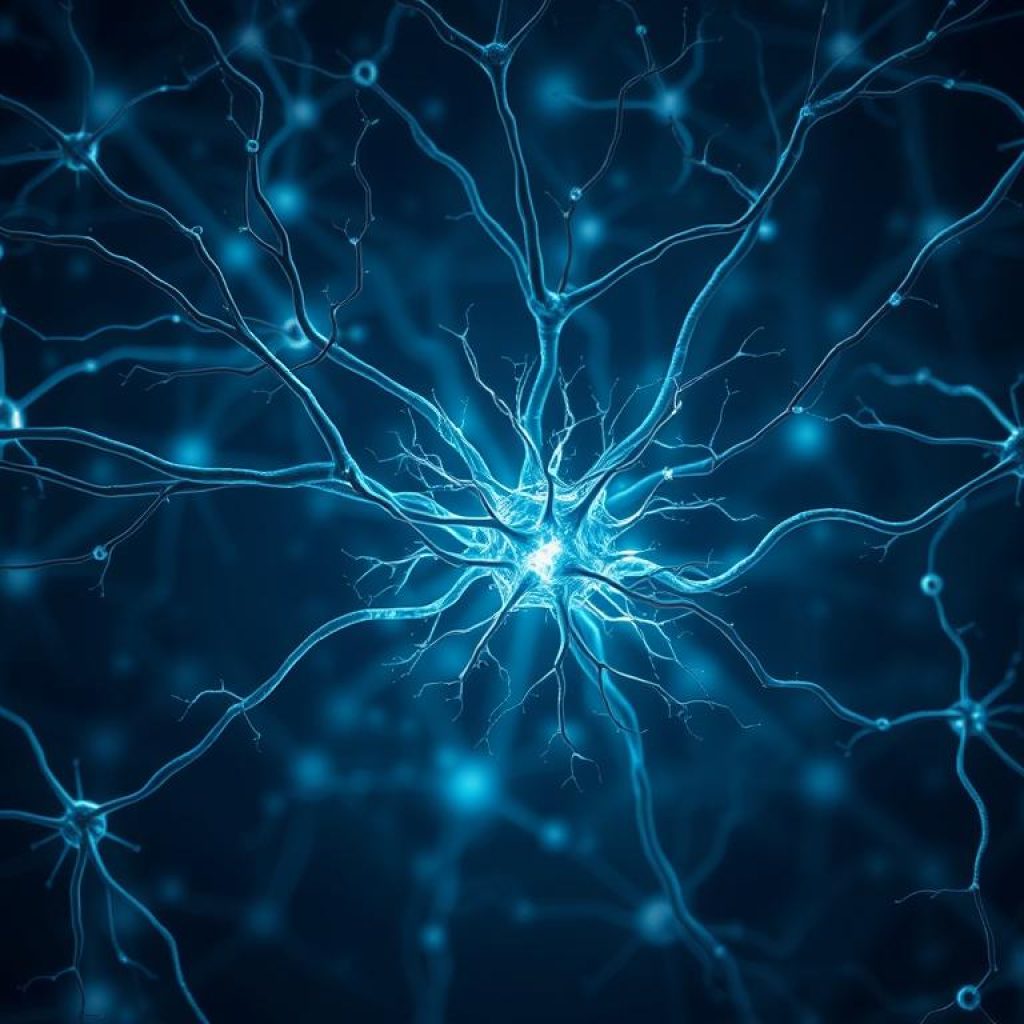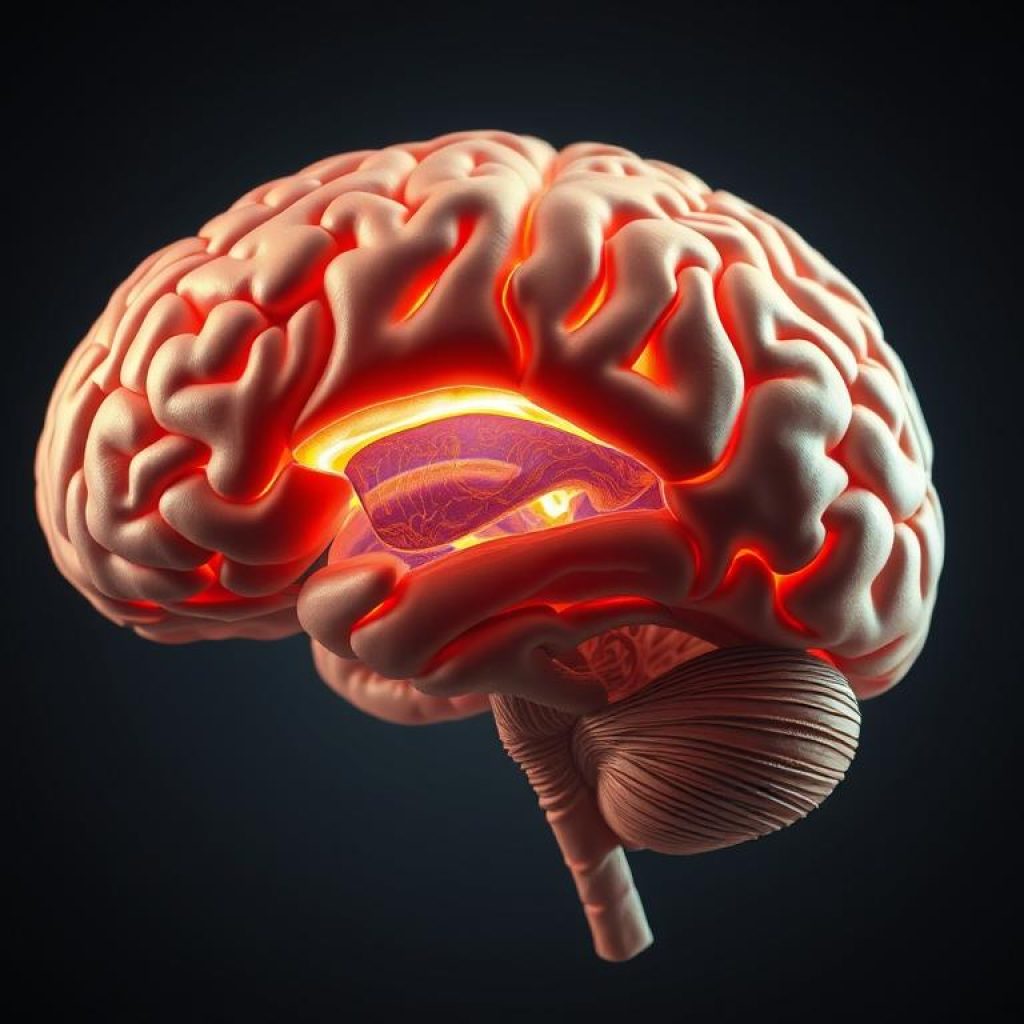Common Myths and Misconceptions about Asperger’s Syndrome

Asperger’s Syndrome, a condition on the autism spectrum disorder, is often shrouded in misconceptions.
Did you know that despite being a recognised neurodevelopmental disorder, many people still harbour misunderstandings about it?
This lack of understanding can lead to stigma and hinder support for those affected. It is crucial to address these misconceptions and provide a clearer understanding of the condition.
By debunking common myths, we can foster a more inclusive and supportive environment for individuals with Asperger’s.
Key Takeaways
- Asperger’s is a neurodevelopmental disorder that is often misunderstood.
- Misconceptions about the condition can lead to stigma.
- Understanding and acceptance are crucial for supporting individuals with Asperger’s.
- Debunking myths can help create a more inclusive environment.
- Education is key to promoting awareness and acceptance.
What is Asperger’s Syndrome? Key Facts and Current Understanding
The concept of Asperger’s Syndrome has evolved significantly over the years, now being recognized as a component of the Autism Spectrum Disorder (ASD). This neurodevelopmental condition is characterized by difficulties with social communication and interaction, alongside restricted and repetitive patterns of behaviour, interests, or activities.
Individuals with Asperger’s Syndrome often exhibit high functioning autism characteristics, meaning they typically have average to above-average intelligence and may not experience significant delays in language development. However, they may still face challenges in social interactions and exhibit restricted or repetitive behaviours.

The History and Evolution of Asperger’s Syndrome Diagnosis
Asperger’s Syndrome was first described by Austrian pediatrician Hans Asperger in 1944. Initially, it was considered a distinct condition from autism, primarily because individuals with Asperger’s Syndrome often had average to above-average intelligence and fewer speech problems. Over time, the diagnostic criteria and understanding of Asperger’s Syndrome have evolved, leading to its inclusion in the Autism Spectrum Disorder in the DSM-5.
The shift in diagnostic classification reflects a broader understanding of the autism spectrum and acknowledges the complexity and variability within it.
Asperger’s Syndrome as Part of the Autism Spectrum Disorder
As part of the Autism Spectrum Disorder, Asperger’s Syndrome is no longer diagnosed as a separate condition. Instead, individuals previously diagnosed with Asperger’s Syndrome are now considered to be on the autism spectrum. This change emphasizes the spectrum’s diversity and the range of experiences and challenges faced by individuals with ASD.
Understanding Asperger’s Syndrome within the context of ASD is crucial for providing appropriate support and accommodations, recognizing the unique strengths and challenges of each individual on the spectrum.
The Origins of Misconceptions About Asperger’s Syndrome
The widespread misunderstanding of Asperger’s Syndrome can be attributed to several key influences. Misconceptions often arise from a combination of factors, including how the condition is portrayed in the media and the cultural stereotypes that surround it.
Media Portrayals and Cultural Stereotypes
Media portrayals play a significant role in shaping public perceptions of Asperger’s Syndrome. Often, characters with the condition are depicted as having savant-like abilities or being socially awkward, reinforcing stereotypes. Cultural stereotypes further complicate this by attributing certain characteristics to individuals with Asperger’s, which may not be accurate. For instance, the notion that people with Asperger’s lack empathy is a common misconception perpetuated by media and cultural narratives.

Changes in Clinical Classification and Public Understanding
Changes in clinical classification, such as the integration of Asperger’s Syndrome into the broader category of Autism Spectrum Disorder (ASD), have also impacted public understanding. While this change aimed to provide a more unified diagnostic framework, it has sometimes led to confusion among the general public. As a result, the distinct characteristics of Asperger’s Syndrome are often lost in the broader discussion about ASD, contributing to ongoing misconceptions.
Myth 1: Asperger’s Syndrome Only Affects Children
The notion that Asperger’s Syndrome is exclusive to children is a common misconception. Asperger’s Syndrome is a lifelong condition that affects individuals across their lifespan.
As a neurodevelopmental disorder, Asperger’s Syndrome is characterized by differences in social interaction, communication, and behavior. While symptoms may manifest differently at various stages of life, the condition itself is not limited to childhood.
The Lifelong Nature of Neurodevelopmental Conditions
Asperger’s Syndrome is part of the autism spectrum disorder (ASD), a group of complex neurodevelopmental conditions. These conditions are characterized by their persistence across an individual’s life. The lifelong nature of Asperger’s Syndrome means that while some symptoms may lessen or change over time, the underlying neurodevelopmental differences remain.
How Symptoms and Challenges Evolve Across the Lifespan
Symptoms of Asperger’s Syndrome can evolve significantly as an individual ages. In children, these may manifest as difficulties with social interactions or repetitive behaviors. In adults, these symptoms may evolve into different challenges, such as maintaining employment or navigating complex social relationships.
Childhood Presentation vs. Adult Manifestation
In children, Asperger’s Syndrome may be characterized by noticeable differences in behavior and social interaction. In adults, the condition may be less apparent, but still significantly impact daily life. 
Late Diagnosis in Adults
Some adults may receive a diagnosis of Asperger’s Syndrome later in life, often after their children are diagnosed or as a result of seeking help for related mental health issues. Late diagnosis can be both a relief and a challenge, as individuals come to understand their experiences in a new light.
| Aspect | Childhood | Adulthood |
|---|---|---|
| Social Interactions | Difficulty making friends, social awkwardness | Challenges in maintaining relationships, workplace interactions |
| Behavioral Patterns | Repetitive behaviors, strong interests | Adaptation of routines, persistence of special interests |
| Diagnosis | Often diagnosed in school-age children | May be diagnosed later in life, sometimes after children’s diagnosis |
Myth 2: People with Asperger’s Syndrome Lack Empathy
Contrary to popular belief, individuals with Asperger’s Syndrome are not devoid of empathy; rather, their expression and experience of it may differ. Empathy is a multifaceted concept that encompasses various ways of understanding and responding to the feelings of others.
Understanding Different Types of Empathy
Empathy is not a single entity but rather comprises different components, includingcognitive empathyandaffective empathy. Cognitive empathy refers to the ability to understand another person’s thoughts and feelings through logical reasoning. On the other hand, affective empathy involves directly experiencing and sharing the emotions of others.
Cognitive Empathy vs. Affective Empathy
Individuals with Asperger’s Syndrome may struggle with cognitive empathy, finding it challenging to infer others’ mental states. However, this does not imply a lack of emotional response oraffective empathy. Many people with Asperger’s Syndrome report experiencing strong emotions and empathizing with others, albeit potentially in ways that are not immediately apparent to neurotypical observers.
Theory of Mind Differences
The concept ofTheory of Mindis closely related to cognitive empathy, as it involves attributing mental states to oneself and others. Individuals with Asperger’s Syndrome may exhibit differences in Theory of Mind, which can affect their ability to navigate complex social interactions. However, this does not mean they are incapable of empathy; rather, they may employ different strategies to understand and connect with others.
The Reality of Emotional Experiences in Asperger’s Syndrome
People with Asperger’s Syndrome have rich emotional lives and are capable of deep emotional connections. Their experiences may not always be expressed in conventional ways, but this does not diminish their capacity for empathy. In fact, many individuals with Asperger’s Syndrome are highly attuned to the emotions of those around them, even if they do not always demonstrate this in obvious ways.

By recognizing the diverse ways in which empathy can be experienced and expressed, we can work towards a more nuanced understanding of Asperger’s Syndrome and the individuals who live with it.
Myth 3: Asperger’s Syndrome is Simply Social Awkwardness
Asperger’s Syndrome is often misunderstood as being merely a matter of social awkwardness, but this perception overlooks the complexity of the condition. While difficulties with social interactions are a characteristic of Asperger’s, they represent just one facet of a multifaceted neurodevelopmental disorder.

The Complex Neurodevelopmental Nature of the Condition
Asperger’s Syndrome is a neurodevelopmental disorder that affects not only social communication but also other critical areas of functioning. Individuals with Asperger’s often experience challenges that are not immediately apparent to observers, making it essential to look beyond the surface level of social awkwardness.
The condition is characterized by differences in cognitive processing and behavioural patterns that can significantly impact daily life. Understanding this complexity is crucial for providing appropriate support and accommodations.
Beyond Social Communication: Executive Functioning and Sensory Sensitivities
Executive Functioning Challenges
One of the key aspects of Asperger’s Syndrome is the presence of executive functioning challenges. These can include difficulties with planning, organization, time management, and self-regulation. Such challenges can significantly impact an individual’s ability to navigate everyday tasks and responsibilities.
Sensory Processing Differences
Many individuals with Asperger’s Syndrome also experience sensory processing differences, which can manifest as hypersensitivity or hyposensitivity to various sensory inputs. This can lead to sensory overload or seeking behaviours, further complicating the individual’s interaction with their environment.
Recognizing these aspects of Asperger’s Syndrome is vital for fostering a more nuanced understanding of the condition and for developing effective support strategies.
Myth 4: All People with Asperger’s Syndrome Have Savant Abilities
The notion that every individual with Asperger’s Syndrome is endowed with extraordinary abilities is a pervasive myth that warrants examination. While some individuals on the autism spectrum do exhibit exceptional talents or savant abilities, it is not a universal trait.
The media often perpetuates the stereotype that individuals with Asperger’s Syndrome possess remarkable abilities, a phenomenon known as the “Rain Man” effect. This portrayal is largely influenced by popular culture, where characters with autism are depicted as having extraordinary skills, such as exceptional memory or mathematical abilities.
The “Rain Man” Effect: Media Stereotypes of Special Abilities
The “Rain Man” effect, named after the 1988 film featuring a character with autism who possesses extraordinary mathematical abilities, has contributed significantly to the public’s perception of Asperger’s Syndrome. Media portrayals often focus on the exceptional talents of individuals with autism, creating an unrealistic expectation that all individuals with Asperger’s Syndrome possess similar abilities.

The Reality of Special Interests and Cognitive Profiles
In reality, individuals with Asperger’s Syndrome exhibit a wide range of cognitive profiles and special interests. While some may have exceptional talents, others may not. The diversity in cognitive abilities and interests among individuals with Asperger’s Syndrome is significant, and it is essential to recognize and appreciate this variability.
Understanding the complexity of Asperger’s Syndrome and acknowledging the diversity within the autism spectrum is crucial for promoting acceptance and providing appropriate support.
Myth 5: Asperger’s Syndrome is Caused by Parenting or Environmental Factors
A common misconception surrounding Asperger’s Syndrome is that it is caused by parenting styles or environmental factors. However, research indicates that Asperger’s Syndrome has a strong neurobiological basis, with genetic and developmental factors playing a significant role.
The understanding that Asperger’s Syndrome is not caused by parenting is crucial for reducing stigma and supporting families. Studies have shown that the condition is associated with differences in brain structure and function, particularly in regions related to social communication and repetitive behaviours.
The Neurobiological Basis of Autism Spectrum Disorders
Research into the neurobiological basis of Autism Spectrum Disorders (ASD), which includes Asperger’s Syndrome, has identified several key factors. Differences in brain development, particularly in the areas responsible for social interaction and communication, are significant. Neuroimaging studies have provided evidence of altered connectivity and structure in the brains of individuals with ASD.

Current Research on Genetic and Developmental Factors
Current research suggests that genetic factors are a primary contributor to the development of Asperger’s Syndrome. Multiple genetic mutations have been associated with an increased risk of ASD. Additionally, developmental factors, including prenatal and perinatal influences, are being studied for their potential role in the aetiology of the condition.
Understanding the complex interplay of genetic, neurobiological, and developmental factors is essential for developing effective support strategies and interventions for individuals with Asperger’s Syndrome.
Myth 6: People with Asperger’s Syndrome Cannot Lead Independent Lives
Asperger’s Syndrome does not predetermine an individual’s ability to live independently; in fact, many lead fulfilling lives with the right support. The potential for independence is significantly enhanced when individuals receive tailored support and accommodations that cater to their unique needs.
The Spectrum of Outcomes and Success Stories
Individuals with Asperger’s Syndrome exhibit a wide range of outcomes, from those who require significant support in daily life to those who live entirely independently. Success stories abound, showcasing individuals who have achieved great things in their personal and professional lives.
For instance, many individuals with Asperger’s Syndrome have successful careers, build meaningful relationships, and engage in their communities. The key to their success often lies in the support systems and accommodations that are put in place.
Effective Supports and Accommodations for Independence
Effective supports and accommodations play a crucial role in enabling individuals with Asperger’s Syndrome to lead independent lives. These can include educational and workplace accommodations, social skills development, and behavioural therapy.
Educational and Workplace Accommodations
Accommodations in educational settings and the workplace can significantly impact an individual’s ability to succeed. Examples include flexible work arrangements, the use of assistive technology, and providing a quiet workspace to mitigate sensory overload.
Social Skills Development and Behavioural Therapy
Social skills development and behavioural therapy are also vital. These interventions help individuals with Asperger’s Syndrome navigate complex social situations and manage behaviours that may be challenging.
| Support/Accommodation | Description | Benefit |
|---|---|---|
| Educational Accommodations | Flexible learning plans, extra time for assignments | Enhanced learning experience |
| Workplace Accommodations | Flexible work hours, assistive technology | Increased productivity and job satisfaction |
| Social Skills Development | Training in social interactions and communication | Improved relationships and social integration |
| Behavioural Therapy | Strategies to manage challenging behaviours | Better emotional regulation and coping mechanisms |

By providing the right supports and accommodations, we can empower individuals with Asperger’s Syndrome to achieve their full potential and lead independent and fulfilling lives. It is essential to recognize the spectrum of outcomes and tailor our support to meet the unique needs of each individual.
Myth 7: Asperger’s Syndrome Presents Identically in Everyone
Contrary to popular belief, Asperger’s Syndrome does not present identically in everyone; instead, it exhibits a wide range of characteristics. This diversity in presentation can often lead to misunderstandings and misdiagnoses.
Asperger’s Syndrome is a neurodevelopmental disorder characterised by a complex interplay of social, cognitive, and behavioural factors. The variability in its presentation is rooted in the unique experiences and characteristics of each individual.
Variations in Symptom Presentation
Individuals with Asperger’s Syndrome may exhibit a wide range of symptoms, from difficulties with social interactions to repetitive behaviours and sensory sensitivities. The severity and impact of these symptoms can vary significantly from one person to another.
Gender Differences in Asperger’s Syndrome
Research has shown that there are significant gender differences in the presentation of Asperger’s Syndrome. Females, in particular, may exhibit different characteristics than males.
The “Female Phenotype” of Autism
The “female phenotype” refers to the tendency for females with Asperger’s Syndrome to present with different characteristics, such as more subtle social difficulties and a greater ability to camouflage their symptoms.
Masking and Camouflaging Behaviours
Many individuals with Asperger’s Syndrome, particularly females, develop strategies to “mask” or “camouflage” their symptoms, making diagnosis more challenging.
| Characteristics | Males | Females |
|---|---|---|
| Social Interactions | Often more overt difficulties | May exhibit more subtle difficulties |
| Repetitive Behaviours | More likely to be noticeable | May be less apparent or hidden |
| Camouflaging | Less common | More common |

Understanding these differences is crucial for accurate diagnosis and effective support. By recognising the diverse ways in which Asperger’s Syndrome presents, we can work towards a more inclusive and supportive environment for all individuals on the autism spectrum.
Myth 8: High Functioning Autism and Asperger’s Syndrome Are Completely Different
The notion that high-functioning autism and Asperger’s Syndrome are entirely different is a misconception rooted in outdated diagnostic practices. Historically, the terms were used to describe individuals with autism who had average or above-average intelligence.
Historical Distinctions and Diagnostic Evolution
Initially, Asperger’s Syndrome was considered distinct due to the perceived absence of significant cognitive delay. However, as diagnostic practices evolved, the differences between the two conditions became less clear-cut. The Diagnostic and Statistical Manual of Mental Disorders (DSM-5) merged Asperger’s Syndrome into the broader category of Autism Spectrum Disorder (ASD), acknowledging the spectrum’s complexity.
Current Understanding of the Autism Spectrum
Today, it is understood that autism spectrum disorder encompasses a wide range of neurodevelopmental variations. The shift towards a spectrum diagnosis recognises the diversity within ASD, including differences in cognitive and linguistic abilities. This understanding promotes a more nuanced approach to diagnosis and support, focusing on individual needs rather than labels.
The recognition of high-functioning autism and Asperger’s Syndrome as part of the autism spectrum has significant implications for diagnosis, support, and public understanding. It underscores the importance of tailored interventions and acceptance of neurodiversity.
Myth 9: Asperger’s Syndrome Can Be “Cured” with Therapy
The idea of a “cure” for Asperger’s Syndrome is controversial and is often met with resistance from the neurodiversity community. This resistance stems from the understanding that Asperger’s Syndrome is not a defect or a disorder that needs to be cured, but rather a natural variation in human neurology.
From the neurodiversity perspective, individuals with Asperger’s Syndrome are not seen as being broken or in need of a fix. Instead, they are viewed as being part of the diverse spectrum of human experience. This perspective emphasizes the importance of acceptance and support rather than seeking a “cure.”
The Neurodiversity Perspective on Autism
The neurodiversity movement advocates for the acceptance of autism spectrum disorders, including Asperger’s Syndrome, as a natural part of human diversity. Proponents argue that rather than trying to change or “cure” individuals with Asperger’s, society should work to create a more inclusive and accepting environment. This includes providing support and accommodations that allow individuals with Asperger’s to thrive.
The Difference Between Support and “Cures”
While therapy can be beneficial in helping individuals with Asperger’s Syndrome navigate certain challenges, it is not aimed at “curing” the condition. The goal of therapy should be to provide support and help individuals develop strategies to cope with difficulties, rather than trying to change who they are. By understanding the difference between support and seeking a “cure,” we can work towards creating a more inclusive and supportive society for individuals with Asperger’s Syndrome.
The Impact of Misconceptions on People with Asperger’s Syndrome
The misconceptions surrounding Asperger’s Syndrome have far-reaching consequences for individuals with the condition. These misconceptions can lead to stigma, which negatively impacts the mental health of individuals with Asperger’s Syndrome.
Misconceptions and lack of understanding can result in individuals with Asperger’s Syndrome facing significant challenges in their daily lives. This can lead to feelings of isolation and exclusion, further exacerbating mental health issues.
Mental Health Consequences of Stigma and Misunderstanding
The stigma associated with Asperger’s Syndrome can have severe consequences for an individual’s mental health. Research has shown that individuals with autism spectrum disorders are at a higher risk of developing mental health issues such as anxiety and depression.
| Mental Health Issue | Prevalence in Asperger’s Syndrome | Impact |
|---|---|---|
| Anxiety | High | Increased stress levels |
| Depression | High | Reduced quality of life |
| Social Isolation | Common | Feelings of loneliness |
Barriers to Appropriate Support and Social Inclusion
Misconceptions about Asperger’s Syndrome can also create barriers to support and social inclusion. Individuals may find it difficult to access appropriate services and support due to a lack of understanding among healthcare providers and the general public.
Promoting social inclusion and providing appropriate support are crucial for improving the lives of individuals with Asperger’s Syndrome. This can be achieved through education and awareness, helping to break down the barriers that prevent individuals with Asperger’s Syndrome from fully participating in society.
Conclusion: Promoting Understanding and Acceptance
Promoting understanding and acceptance of Asperger’s Syndrome is crucial for creating a more inclusive society. Education and awareness are key to dispelling misconceptions surrounding this neurodevelopmental condition, which is part of the autism spectrum disorder.
By understanding the realities of Asperger’s Syndrome, we can foster a more supportive environment for individuals on the autism spectrum. This involves recognising the diversity within the autism spectrum and the unique experiences of those with Asperger’s Syndrome.
Acceptance is not just about tolerance; it’s about valuing the contributions and perspectives that individuals with Asperger’s Syndrome bring to our communities. Through education and awareness, we can work towards a society that is more inclusive and supportive of all individuals, regardless of their neurological makeup.
